Sydney Smith is a welcome addition to the AWW family as both a monitor and a trainer. She started monitoring a couple of years back while pursuing her studies, a Bachelor’s degree in Environmental Science at Auburn University. She quickly pursued becoming an AWW trainer last year, and conducted her first Water Chemistry and Bacteriological Monitoring workshops last month! Her enthusiastic, altruistic spirit is evident from the moment you meet her!
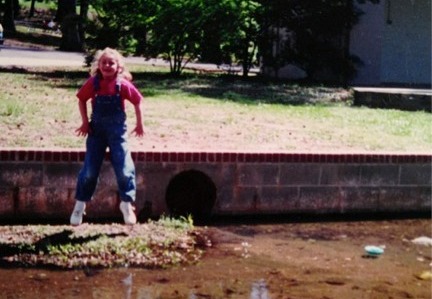
The moment Sydney’s interest in water resources began in Monkey Park, Opelika (note her levitation; a few years ago)!
Let’s get to know Sydney a little better:
1. Where do you call home?
Auburn Alabama is my home sweet home! I was born and raised in Auburn, and I would like to say that I bleed orange and blue! My dad went to school at Auburn University for Civil Engineering and decided to stay and settle down here. I’m sure glad he did! Auburn has been a great place to grow up and go to school.
2. What stream, river, lake, bay, bayou is your favorite water-spot?
My favorite water-spot in our great state of Alabama is Lake Guntersville. My grandparents live on a farm just north of Guntersville Lake State Park in Langston, AL. I grew up camping with my grandparents on the shores of Lake Guntersville, catching fireflies, fishing and swimming. We have had several of our family reunions by the lake.
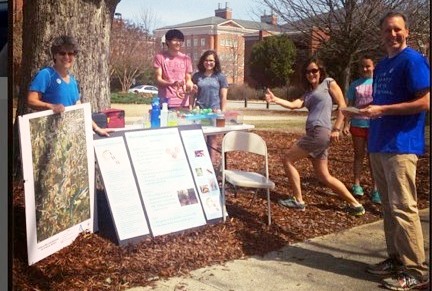
Sydney (behind the camera) and friends at the Parkerson Mill Creek outreach event at the Kappa Kolor Run in 2015.
3. What water recreation/sports do you enjoy most?
I love kayaking, but I wish I could wake board! It just looks like so much fun. I have terrible balance, so wake boarding was never a good option for me! I would love to eventually kayak or canoe on all of Alabama’s beautiful rivers. I kayaked on the Coosa last summer, and I would really love to canoe the Cahaba and see the beautiful Cahaba lilies up close!
4. What got you interested in Alabama Water Watch?
When I was a kid, my dad would take me sampling on some of the creeks in Auburn. We would sample Moore’s Mill and Chewacla creeks with the AWW water chemistry kit. The sampling process and learning about the various water quality issues was fascinating to me.
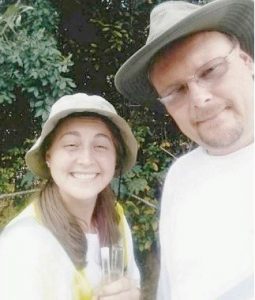
Sydney sampling with Dad, Dewayne, on Parkerson Mill Creek in Auburn – an unbeatable team!
In spring of 2014, my sophomore year of college, I started working with ACES Water Resources (with the amazing Dr. Brantley!) and they requested that I get certified in bacteriological and water chemistry monitoring so I could start to sample on Parkerson Mill Creek. I have been monitoring ever since!
5. What are your biggest challenges/issues in your favorite watershed?
Some of the biggest issues on Parkerson Mill Creek (like most urbanized streams) include trash, erosion, and pathogens.
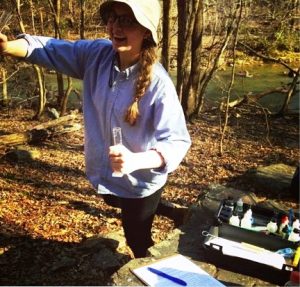
Sydney conducting AWW water chemistry testing at her first site on Chewacla Creek.
Thanks to some amazing Auburn student groups, we have been able to pick up some of the trash, plant native species on the banks, and help restore portions of PMC.
6. Do you have some “lessons learned” that you could pass on to the rest of us relative to watershed stewardship?
One of the most important things is getting as many people from diverse educational/ environmental backgrounds involved in the issues of your watershed. Get together a great team, and you will be unstoppable!
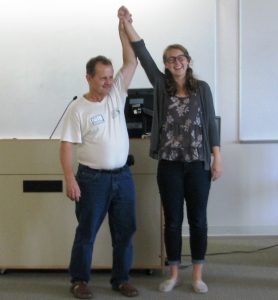
Sydney exhibiting her ubiquitous smile as she wins the Snake Sighting Award at the 2015 AWW Annual Gathering.
